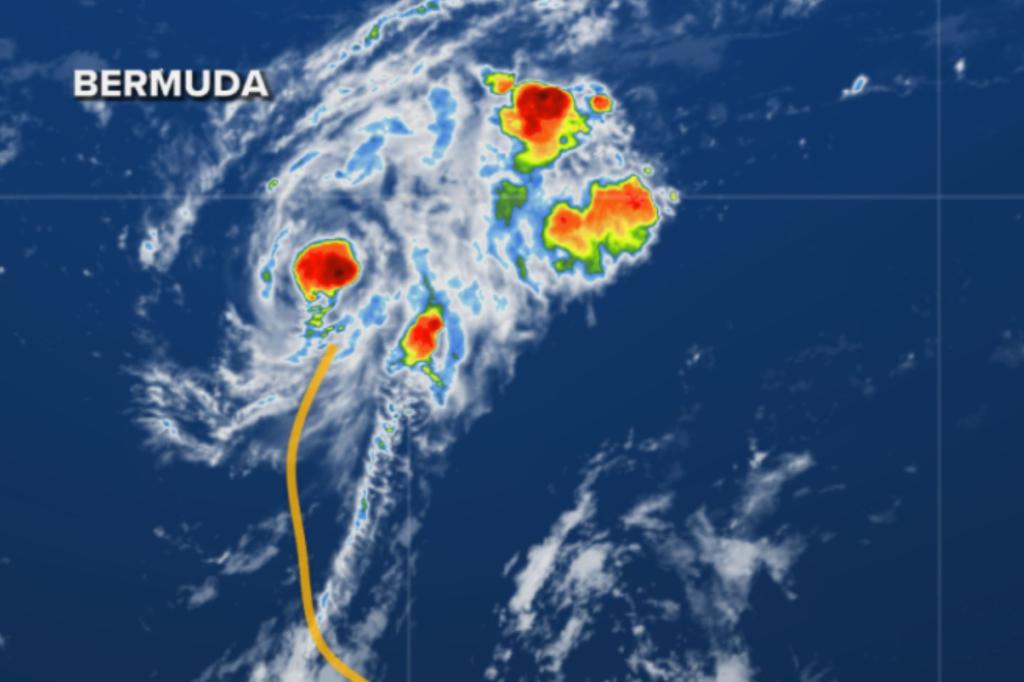New Tropical Storm Fernand Forms Southeast of Bermuda
On Saturday, a newly formed tropical storm, named Fernand, was reported southeast of Bermuda and is anticipated to intensify as it moves north this weekend.
According to satellite imagery and observations from an Air Force Reserve reconnaissance flight, Tropical Storm Fernand originated approximately 400 miles south-southeast of Bermuda.
Currently, the storm has recorded maximum sustained winds of around 40 mph, with gusts exceeding that speed, and is proceeding on a northward path.
The National Hurricane Center (NHC) forecasts that the storm will continue to strengthen over the next several days, passing to the east of Bermuda.
Forecast models indicate that while the system may approach hurricane status, it is expected to remain in waters well east of the U.S. coast.
The NHC warns of potentially hazardous surf and gale conditions around Bermuda as the storm gets nearer to the island early next week.
Authorities are urging Bermudian residents and visitors to stay tuned for weather updates, as even a slight shift in Fernand’s trajectory could lead to more significant impacts.
NHC meteorologists predict that the storm will begin to weaken post-Monday due to cooler sea temperatures and increased wind shear, likely transitioning to a post-tropical state within three to four days.
In addition, the combination of large swells from Fernand and remnants of Hurricane Erin is expected to elevate the risk of rip currents along the U.S. East Coast for the upcoming week.
A broad troughing pattern across the eastern United States is acting as a barrier, likely protecting the continent from tropical threats for the remainder of the month.
This shift in weather dynamics offers a respite, with over 100 million residents east of the Rockies experiencing fall-like conditions, with temperatures ranging from 10 to 30 degrees below average in the coming week.
Meanwhile, the NHC is closely monitoring a tropical disturbance known as Invest 99L, located less than 1,000 miles east of the Caribbean islands.
Meteorologists highlight that any development of this disturbance is likely to be gradual due to adverse upper-level winds and dry air.
Some models suggest that 99L could develop further in the western Caribbean or southern Gulf, but this would occur beyond the next week.
The next named storm in this tropical season will be Gabrielle, marking the seventh named system of the year.
The Atlantic hurricane season continues until November 30, with peak activity typically occurring in September.

Passionate journalist and digital news editor with a keen eye for global affairs and emerging trends. As the founder and lead writer of RSS News US, he is dedicated to delivering accurate, insightful, and engaging content to readers seeking trustworthy news in a fast-paced world.


